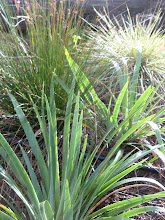Hello world! After several failed attempts over the past several years, I have finally found my way back into this blog!
Saturday, April 23, 2016
Sunday, September 7, 2008
Making Marks

First there was a weeping beech. Not only is the bark smooth and white (which makes carvings more legible that they would be on say, a black walnut), but the architecture of the tree creates seclusion—a place where one’s not as likely to be caught being a vandal.

To everyone that journeys under its canopy, the tree becomes their place, makes them feel a sense of discovery, that maybe they’re privy to this spot. And it's satisfying finding a curious shaded spot off the beat path after wandering on the sunny, public grounds of the Brooklyn Botanic Garden. It's a nice contrast.
It’s also interesting to see what people (individuals, couples, maybe even groups) carve when no one else is watching. And what do they carve?


Their identities. Some cool designs. The tree has been changed. Cuts are generally unhealthy for a tree. Weakens growth, exposes inner tissues to pathogens…and yet, in my opinion, the bark has become very beautiful. The most beautiful marks are the ones filled in with scar tissue, where the marks have had time to influence the tree’s growth—to become part of the tree. I didn’t feel the need to contribute (perhaps I’m more of a critic than a participant and besides, I like my trees healthy), but I bet the first cut was all it took to get the ball rolling. I wonder when it hit that threshold: when it became a community art project.

Same with this abandoned pumphouse in Manayunk. Brick, lumber, spray paint, human hands, and decay has created a rich texture.
Layers upon layers. Sublime.
(Don't worry, I was not alone. This was on a field trip with a class.)
We humans like to make a mark.
It's contagious.
Thursday, July 10, 2008
Beachcombing
I spent the Fourth of July with my family at Big Lagoon and Trinidad. There are lots of cool things on the beach for the garden: rocks, driftwood, bleachglass, and what have you. (When I was a kid my mom paid me five bucks to haul a "stepping-stone" down the sand spit of Big Lagoon.) But on the 4th I made a real find.




A Dudleya farinosa (!) about the size of my hand, washed up or delivered by dog. (The rosette's a few inches across.) Surely this is guilt-free wild plant collection. For you non-Californians, Dudleyas are echevaria-like succulents that grow on our coast (and inland, and in Mexico). Wikipedia has a nice photo of a healthy specimen. The plant I found, while lacking roots, is still firm and should be as easy to propagate as a sedum.
One may recall that big silver Dudleyas were on my fountain planting wishlist, but on second thought, I think it would get too much water there.
And in related news, the Triteleia bulbs have surprised me by putting out rapid growth: flower buds and one bloom. It's a little late for the 4th of July, but the color combination turned out to be red, silver (or white, if you will), and blue, instead of red, purple and silver. Some changes may be necessary for next year. Still, I can't complain.


Labels:
Container Gardening,
Miscellaneous,
Propagation
Sunday, July 6, 2008
Iris Rootborer

Last year I noticed a few of the irises yellowing and that even green leaves loosely fell off the plants. While I was proud, to pinpoint the problem (below, fairly obvious), I was sad to have to destroy the afflicted plants. This year it seems that the rest of the doug irises in the coastal prairie are succumbing and I don't know what to do.


Monday, June 30, 2008
Ugly/Beautiful
Here's a quick article from philly.com about an eccentric man and his garden. Skimpy on the gardening, but we share some thoughts:
"Ugly can sometimes be beautiful, but merely pretty can never be beautiful," he says. "Things that are really beautiful keep you coming back because they're not just attractive, they're compelling."
"Ugly can sometimes be beautiful, but merely pretty can never be beautiful," he says. "Things that are really beautiful keep you coming back because they're not just attractive, they're compelling."
Tuesday, June 24, 2008
Green Daylily
Check out Frances's green daylily. While I normally despise daylilies (sorry Frances, if you're reading this, it's just me...I prefer Lilium), there is something about green (and black actually) flowers that make them candidates for a dream garden.
Phormium
I have a landscaper friend who had to leave town for a couple of months, so I've been doing the gardening for a few of her clients on the weekends. It's been fun.
Anyway, I want to remember this:
Forget landscape tape--that nasty oily tape that one has to buy, that may never biodegrade, and that usually stands out in a garden despite being green. The Phormium tenax growing in the pot over there has a few browning leaves it won't miss. Cut them off, shred them into a few strips. There. They work wonderfully.
Food, fiber, firewood, building material, medicine...what are the resources around you?
Anyway, I want to remember this:
Forget landscape tape--that nasty oily tape that one has to buy, that may never biodegrade, and that usually stands out in a garden despite being green. The Phormium tenax growing in the pot over there has a few browning leaves it won't miss. Cut them off, shred them into a few strips. There. They work wonderfully.
Food, fiber, firewood, building material, medicine...what are the resources around you?
Subscribe to:
Comments (Atom)





